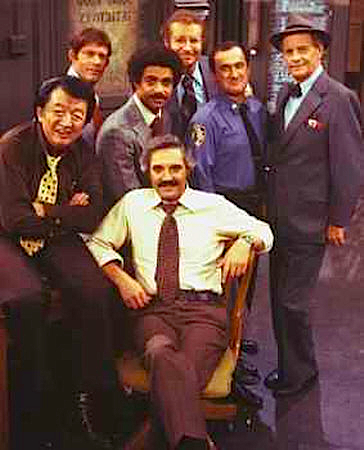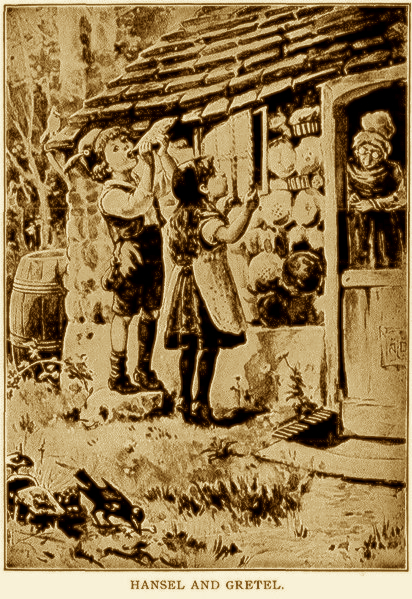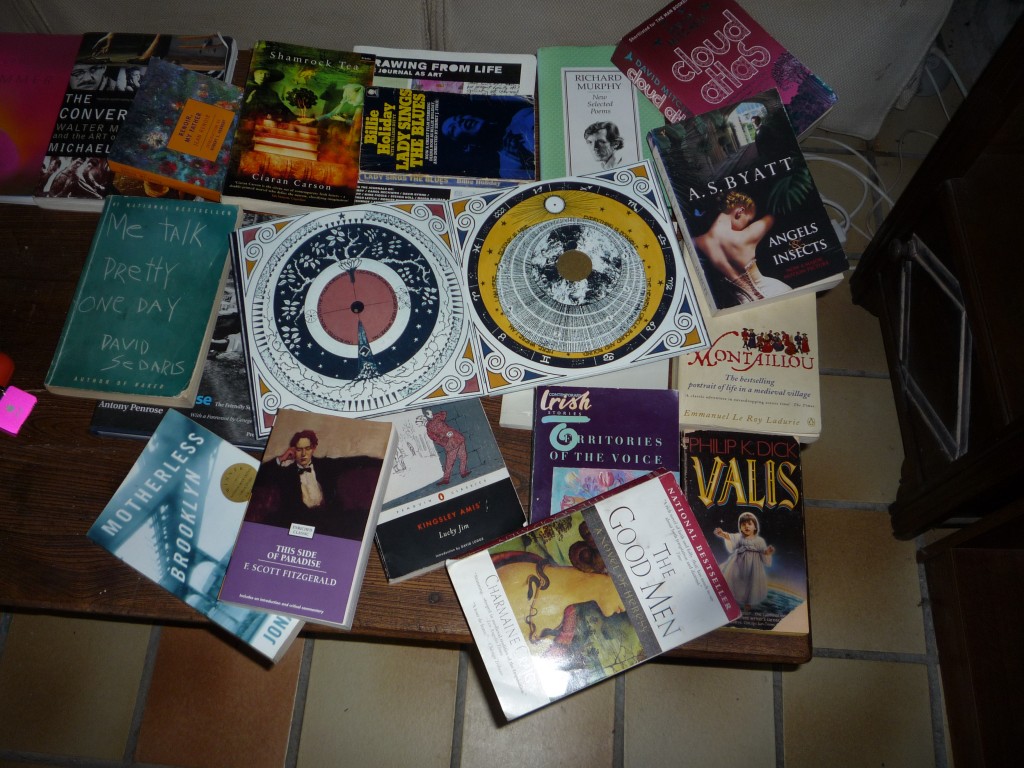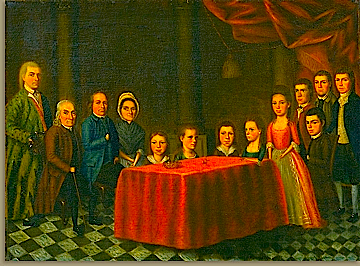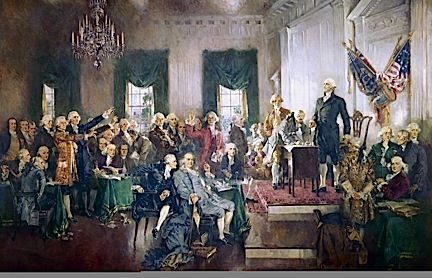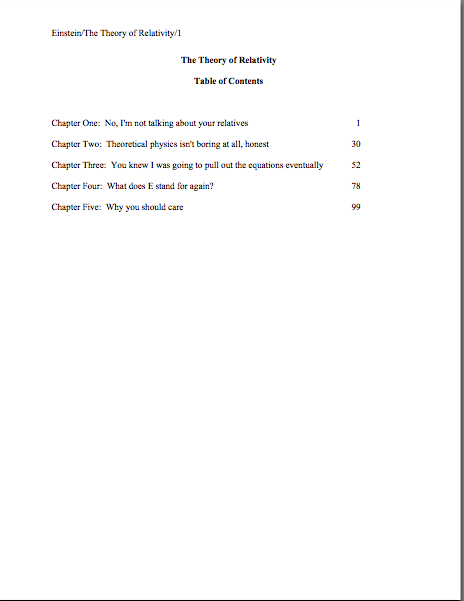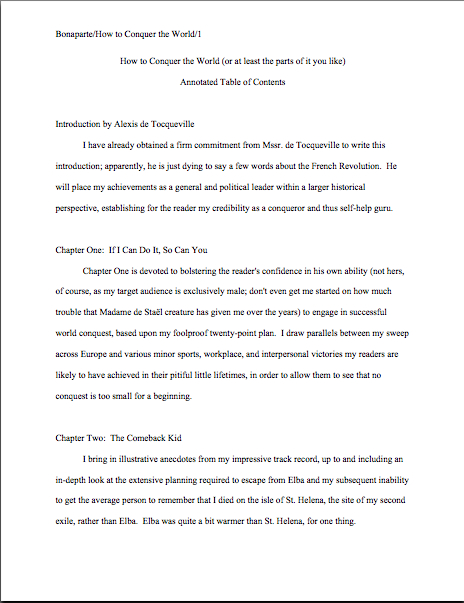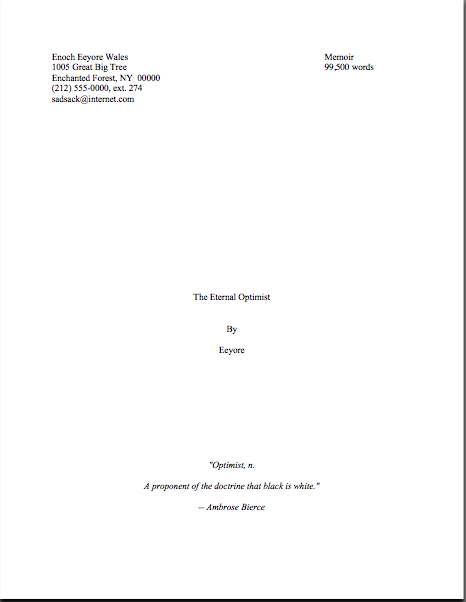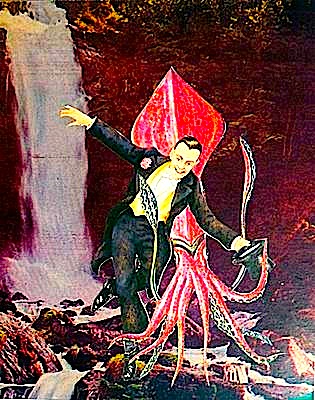
Okay, okay, I guess it’s finally time to admit it: I was overly-optimistic in predicting that I’d get to the basics of pitching to an agent this week. Mea culpa. That series, always popular during literary conference season, will start Monday, barring hell, high water, or the kind of deadline that both agented authors and book doctors like yours truly know so well, the kind that is announced with the phrase, “I know I should have told you about this months ago, but I need it next week!”
Take heart, however, good people: I’ll be wrapping up my ongoing series on effective interview scenes today.
We’ve talked about quite a number of ways that a protagonist can (and so often does) annoy Millicent by being a bad interviewer — that is, by thwarting the reader’s desire to know what’s going on by failing to ask good questions, omitting to ask logical follow-up questions, and generally not stepping fully into his role as the audience’s surrogate detective. Since these flaws are so very pervasive in manuscripts, professional readers tend to feel that scenes that contain them drag.
“Pick up the pace, already,” Millicent mutters darkly into her latte. “Don’t just sit there, waiting for something to happen.”
Millicent doesn’t have much patience for passive protagonists in general, as all of us here at Author! Author! are only too sorrowfully aware. (And if you’re not, you might want to check out the PURGING PROTAGONIST PASSIVITY category on the archive list located at the lower right-hand side of this page, to learn precisely why a slow-moving hero irritates her so.) Even in a submission stuffed to the gills with conflict, a protagonist who doesn’t invest much energy into an interview, even for a half a page, is likely to raise her hackles.
The professional reader’s distaste for low-conflict dialogue often comes as a great big shock to novelists (and memoirists, for that matter), especially those who write literary fiction. In trying to avoid spending the entire narrative inside the protagonist’s head, they tend to regard dialogue as action — there’s exchange between the characters, right? But if the stakes aren’t very high in the discussion, or if the protagonist doesn’t take a definite side, dialogue is not necessarily conflictual, in the literary sense.
Or, to put it another way: after reading literally thousands of manuscript submissions, Millicent no longer believes that a protagonist is active just because her lips happen to be moving. Talk is as cheap on the page as it is in real life.
In fact, a protagonist can become more passive by talking. Let’s revisit one of my all-time favorite examples of a classic bad interview scene, a rather lengthy excerpt from the 1625 opera La liberazione di Ruggiero dall’isola d’Alcina by Francesca Caccini. (Hey, I told you it was a classic.)
The brave knight Ruggiero, ensnared by the love spells of the evil sorceress Alcina (who had a nasty habit of turning her exes into trees; opera gives one a lot of room for imaginative touches), has deserted both his fighting obligations and his warrior girlfriend, Bradamante. So another sorceress, Melissa, turns herself into an image of Ruggiero’s father, Atlante, to try to free him. Dressed as Atlante (and turning from an alto into a baritone for the occasion, a nifty trick), Melissa berates Ruggiero for lying around in sensual bliss when there’s work to be done.
A single three-minute solo later, Ruggiero’s mind is changed, with no argument from the big guy himself: he is free from the spell, and goes on to bellow some extraordinarily nasty insults at Alcina while Punchinello dances around with a squid.
Try not to be distracted by the squid for the moment. (Although would you believe that I wrote the line about squid-jiggery first, then found the antique postcard image above? The Internet is a weird and wonderful place.) Concentrate on how too-easy agreement scuttles what could be some interesting argument.
Or, as Millicent might put it, a scene that might keep her reading.
This type of persuasion in an interview scene — where the protagonist’s mind is changed on an issue about which he is supposedly passionate simply because someone TELLS him he’s wrong, without engaging in convincing argument — occurs in novel submissions more often than you might think. Many a protagonist who is downright tigerish in defense of his ideals elsewhere in the book becomes positively lamblike when confronted by a boss, a lover, a child, etc. who points out his flaws.
And that, unfortunately, makes the conflict seem much less important than if the characters argue the pros and cons at least a little. Usually, the result is a more compelling scene — and better character development for the arguers.
Oh, heck, I’ll go out on a limb here: it’s almost always better storytelling.
Why? Everybody haul out your hymnals and sing along with me now: because conflict is more interesting in a scene than agreement. As we discovered last time, unending harmony, as delightful (and rare) as it may be in real life, can be a real snooze-fest on the page.
Even the injection of just a little good, old-fashioned passive-aggression can ginger up a scene no end. (Stop speculating about that squid, I tell you. We’ve moved on.)
Nor does being easily persuaded, non-confrontational, or generally — brace yourself — nice necessarily render a protagonist (or any other character) more likeable to the reader. No, not even if the reader happens to enjoy the company of such sterling souls in real life.
Why, you cry? Because endlessly making nice tends to kill dramatic tension dead, dead, dead.
That seems to come as a surprise to many aspiring writers, judging by the number of first novels and memoirs where the protagonist bends over backwards never to offend anyone — especially common in manuscripts where the protagonist happens to be female, I notice. Butter wouldn’t melt in some of these ladies’ mouths, as the saying goes. Which pretty much inevitably results in either a relatively conflict-free plot or a passive protagonist who stands on the sidelines while the less scrupulous (and more interesting) characters act.
Make something happen: let your characters disagree, equivocate, be downright obstructionist. Interpersonal conflict will usually bring a smile to Millicent’s over-caffeinated face faster than agreement. (Conflict on the page, at least; don’t argue )
And while you’re at it, here’s a radical thought: why not have more going on in a dialogue scene than just the dialogue?
Ooh, that one raised as many hackles as confused eyebrows, didn’t it? I’m not entirely surprised — many, many novelists (and, again, memoirists are not exempt from the practice) cling tenaciously to that old warhorse of writerly advice, the notion the dialogue should show absolutely everything necessary for the reader to know about a situation, without the added distraction of commentary, insight into thought processes, or physical reactions.
Oh, dear, how to break the realities of professional writing gently to those of you fond of this classic piece of 11th-grade writing guidance? Here’s the best I can do: Millicent would be far, far happier if far, far fewer 11th-grade English teachers had given this advice.
Why? Because approximately 95% of novel submissions contain extensive sections that might as well be written as plays. And while dialogue-only scenes can convey all the reader needs to know, they have a nasty tendency to minimize nuance.
Or, as Millicent has been known to put it, to produce scenes where all that’s going on is what’s going on.
To be fair, chucking all the narrative out of an interview scene is a strategy we’ve all seen work brilliantly, particularly for comedy. Sticking solely to dialogue enables the reader to move quickly through banter, without having her attention drawn away by side comments from the narrator. To haul out yet another of my favorite examples (hey, I had to do something to get your mind off that squid), take a gander at this bit of self-sufficient dialogue from Joseph Heller’s CATCH-22:
“What’s your name, son?” asked Major — de Coverley.
“My name is Milo Minderbinder, sir. I am twenty-seven years old.”
“You’re a good mess officer, Milo.”
“I’m not the mess officer, sir.”
“You’re a good mess officer, Milo.”
“Thank you, sir. I’ll do everything in my power to be a good mess officer.”
“Bless you, my boy. Have a horseshoe.”
“Thank you, sir. What should I do with it?”
“Throw it.”
“Away?”
“At that peg there. Then pick it up and throw it at this peg. It’s a game, see? You get the horseshoe back.”
“Yes, sir, I see. How much are horseshoes selling for?”
This is a pretty admirable use of pure dialogue, isn’t it? It tells us everything we need to know about characters that the book is not going to explore in much depth: Major — de Coverley is a whimsical commander who regards his own word as law, and Milo is obsessed with the art of the deal.
Not bad character development, for only thirteen lines of dialogue. As a technique, no-frills dialogue can undoubtedly be extremely useful, and I applaud its use in moderation. However — and this is one of my patented BIG howevers — like the rule about perspective in third-person narration, a lot of writers and writing teachers get carried away with it.
In fact, you can’t throw a piece of bread at a writers’ conference without hitting someone who will tell you, with an absolutely straight face, that dialogue should NEVER be encumbered by non-spoken information.
Those of you who have been reading the blog for awhile should be able to predict my reaction to this: I’m no fan of the hard-and-fast stylistic rule, generally speaking. The rules of grammar I can respect as immutable (as I wish more writers, particularly those who crank out copy for magazines and newspapers, did), but I am always mistrustful of any rule that tells me that I must dismiss a particular piece of writing automatically, without really reading it, on the basis of a stern stylistic preference.
Perversely, so does Millicent, usually, at least in this particular case. Yes, I know that’s a bit odd in someone whose job is to dismiss many pieces of writing automatically, often based on rather cursory readings, on the basis of stern preconceived notions of, say, how a professional manuscript should be formatted (if you’re not absolutely positive, please see the HOW TO FORMAT A MANUSCRIPT category at right before you even dream of passing your pages under her bloodshot eyes) or current conceptions of style within her boss agent’s chosen genre.
But believe me, if you read manuscripts for a living, you might start resenting dialogue-only scenes as well. I must admit it: like Millicent, I often find long stretches of pure dialogue rather boring.
Yet despite the pervasiveness of this attitude amongst professional readers — yes, including contest judges — aspiring writers keep submitting manuscripts crammed with lengthy dialogue-only scenes, probably for much the same reason that the other dialogue weaknesses we’ve discussed in this series are so incredibly common. Movies and television have accustomed us to stories told entirely by dialogue, visuals, and background music, after all.
Is this the right time to remind everybody that novels and memoirs are not limited to those storytelling techniques? Would it be too cruel to suggest that utilizing only those means in a manuscript is rather like an orchestra conductor’s telling the woodwind, brass, and percussion sections that they might as well go home, since the tune’s going to be carried entirely by the strings?
There’s nothing wrong with violin music, of course — but if you’re going to the symphony, is that all you want to hear?
I’m sensing some disgruntlement amongst those of you who have been hanging out at writers’ conferences lately — particularly conferences that feature those ever-popular speakers, screenwriters eager to share the tricks of their trade with book writers. If you took that same piece of bread you were trying to fling above and cast it at the speakers’ table at the same average conference, you might well hit some expert who had come to tell novelists that their work would be best served by embracing screenwriting techniques with vigor, and keeping thought and physical sensation reportage to a minimum.
I can tell you the source of this advice: a very common fledgling writer tendency to get so bogged down in reporting every thought the protagonist has that the text slows down to the rate of molasses flowing uphill. It is definitely possible to stay too much in a character’s head.
Yes, yes, we all know about Proust and Dostoyevsky’s characters who languish in bed for scores of pages at a stretch, contemplating their lives. It was fresh when they did it, but it’s been done so many times now that it’s bound to seem derivative.
For my sins, I once sat through a five-hour version of HAMLET that so catered to the title character that the actor (who, since he is now a rather famous political blogger and former editor-in-chief of THE NEW REPUBLIC, shall remain nameless) was allowed to take FIFTEEN MINUTES to get from “To be or not to be” to “Soft you now, the fair Ophelia” — a mere 33 lines of text, according to the Riverside Shakespeare that every college student of my generation owns.
And this for a speech that, as any Shakespearian actor can tell you, half the audience knows well enough by heart to chant softly along with the actor. It was a bit de trop. (Truth compels me to own that since it was the late 1980s, the audience of this particular production of HAMLET was also plagued by repeated playings of Frankie Goes to Hollywood’s dubious hit, RELAX, DON’T DO IT. I’ve witnessed more subtle directorial symbolism.)
From the reader’s perspective, a too-long sojourn into any character’s thoughts, feelings, and doubts (a particular favorite for writers of literary fiction, perhaps due to too many viewings of HAMLET in their early youths) can feel interminable. I am not necessarily an advocate of the hard-and-fast rule that some conflict should occur on every single page (although it’s not a bad rule for a first-time self-editor to follow), but most readers do tend to get a bit restive after the fourth or fifth page of a character’s sitting around and thinking.
And we already know how Millicent tends to react to it, right?
If you are not of the sit-and-ponder school, but are still wondering if you are staying too much in a character’s head in a third-person narrative, here’s a self-editing tip: go through the text and note every time the reader is given information outside dialogue by the protagonist’s specifically NOTICING something. Pay attention to whether the text lets the narration mention that the truck stop waitress has red hair, or whether Joe Protagonist SEES her have red hair.
If you find that more than about a tenth of the information is conveyed as protagonist sensation, you should think about moving the perspective outside him more. Or consider switching to first-person narration, where thought may be intermingled seamlessly with narration.
All that being said, I am still a fan of exposition alternated with dialogue, particularly in emotionally-charged scenes. We writers live so much in our heads that we tend to create characters who do so, too. However, in real life, people have physical reactions to things: discomfort in their guts when meeting someone smarmy, tightness in the chest when yelled at by the boss, slumping of the shoulders when receiving the news of the death of a friend.
These are legitimate pieces of information to include in characterization; they often add depth to dialogue-based scenes. Not to mention being a great way to introduce more to the scene than is apparent in the words spoken. Because, let’s face it, there are plenty of human interactions that cannot be adequately conveyed in all of their nuanced glory by dialogue alone.
Frankly, I’m skeptical about the idea that dialogue can ALWAYS convey everything that is going on in a scene, either emotionally or factually. People very frequently do not say what they are thinking, and Freudian slips, though common in post-war literature, actually do not occur with great frequency in real life. Frequently, what a character is NOT saying can be as telling as what she is. Even in comedy, where speed of exchange is most desirable, adding exposition amid the verbal exchanges of wit can considerably heighten the tension of a scene.
Since I’m trotting out so many of my pet exemplars today, let’s take a look at this excerpt from E.F. Benson’s LUCIA IN LONDON, the second installment in Benson’s brilliantly funny Mapp and Lucia series. Here, social climber Lucia is sitting in the boudoir of duchess Marcia, chatting with her newly-acquired friends about lovers; she has been pretending to be having an affair with fey Stephen, to make herself appear more interesting, and Marcia et alia are trying to grill her about it. Lucia has just finished saying:
“… If you all had fifty lovers apiece, I should merely think it a privilege to know about them all.”
Marcia longed, with almost the imperativeness of a longing to sneeze, to allude directly to Stephen. She raised her eyes for a half second to Adele, the priestess of this cult in which she knew she was rapidly becoming a worshipper, but if ever an emphatic negative was wordlessly bawled at a tentative enquirer, it was bawled now. If Lucia chose to say anything about Stephen, it would be manna, but to ask — never! Aggie, seated sideways to them, had not seen this telegraphy, and unwisely spoke with her lips.
“If an ordinary good-looking woman,” she said, “tells me that she hasn’t got a lover or a man who wants to be her lover, I always say, ‘You lie!’ So she does. You shall begin, Lucia, about your lovers.”
Nothing could have been more unfortunate. Adele could have hurled the entire six rows of Whitby pearls at Aggie’s face…The effect of her carelessness was that Lucia became visibly embarrassed, looked at the clock, and got up in a violent hurry.
“Good gracious me!” she said. “What a time of night! Who could have thought our little chat had lasted so long?”
There is a LOT of information conveyed in this excerpt, and all of it contributes to Benson’s comic effect. Now look at the same passage after the dialogue-only rule has been applied to it:
“… If you all had fifty lovers apiece, I should merely think it a privilege to know about them all.”
“If an ordinary good-looking woman,” Aggie said, “tells me that she hasn’t got a lover or a man who wants to be her lover, I always say, ‘You lie!’ So she does. You shall begin, Lucia, about your lovers.”
“Good gracious me!” Lucia said. “What a time of night! Who could have thought our little chat had lasted so long?”
Quite a bit flatter, isn’t it? Aggie’s fluke and Lucia’s reaction are still there, but the other two women might as well not have been in the room. We have entirely lost the delicious sense of conspiracy between Marcia and Adele, and Aggie’s blunder has been reduced to simple gaucherie. As a direct result, it’s substantially less funny — and less nuanced.
Again, the enriched dialogue method should be used in moderation, just as the dialogue-only method should be. Like profanity, stylistic restrictions are far more effective when used sparingly than constantly; who pays attention to the profanity of a constant swearer? Select the time when your dialogue choice will have the greatest effect.
And that, thank heavens, is my last word on dialogue, at least for the moment. Brace yourself for our giddy, headlong upcoming plunge into pitching — and, as always, keep up the good work!
PS: when’s the last time you made a back-up of your computerized writing files? If you haven’t done it within the last week, humor me, please, and do it as soon as possible; I’d hate to think of any of you losing pages or chapters in the event of a hard disk crash. If you’re unclear on what your backing-up options are, please rush post-haste to the BACK-UP COPIES category on the list at right.
